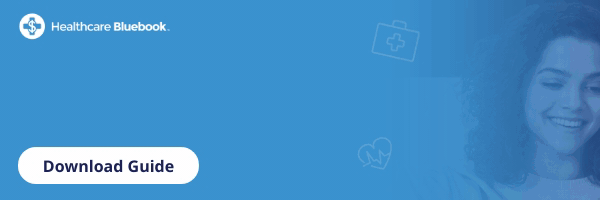-1.jpeg?width=1000&height=667&name=AdobeStock_737878161%20(2)-1.jpeg) Employers may not be able to escape increasing healthcare costs, but they can mitigate those costs—and it’s essential for employers and employees to do so.
Employers may not be able to escape increasing healthcare costs, but they can mitigate those costs—and it’s essential for employers and employees to do so.
One of the top ways to mitigate rising costs that has a huge impact on employees’ lives is to invest in healthcare navigation tools. These tools improve employees’ lives by providing necessary information on cost and quality in healthcare so they can make informed decisions, and these tools also help reduce costs for employers.
Why Healthcare Navigation Tools Are Important
People are paying more attention to their health, but it doesn’t mean they have the resources required to search for high-quality care at a Fair Price™. According to a Health Care Insights Study, 77 percent of people have paid more attention to their health since the pandemic. Although this is a beneficial trend, individual success in finding care can be hampered by healthcare costs and the lack of price transparency.
According to the same study, 61 percent of people stated their providers didn’t ask about the affordability of healthcare services or discuss resources that help them with costs. Additionally, 25 percent of people have little to no familiarity with the out-of-pocket costs they have to pay for healthcare services received. Nearly a quarter of the study respondents stated that they don’t understand how to look at their health plan to understand out-of-pocket costs.
Considering these statistics, employers need to provide resources such as cost and quality navigation tools to help members find appropriate high-value care.
How to Navigate Cost Efficiency and Quality in Healthcare
Having information about cost and quality in healthcare is essential to reducing costs and improving employees’ health. Here’s how to navigate cost and quality in healthcare and help employees make more informed decisions.
1. Determine the Appropriateness of Care
Healthcare providers, patients, and their family members often report unnecessary care received in the intensive care unit. But what constitutes appropriate care?
According to a 2023 study, healthcare providers described appropriate care as high-quality, patient-centered, and meaningful. Care shouldn’t just be proportional to the quality of life of the patient; it should also stay within the lines of the patient’s or their relative’s wishes. Additionally, appropriate care should reduce unnecessary or harmful prescriptions, tests, and procedures. Not every surgery needs to be performed, especially when alternative, less drastic measures could be implemented as a better way to successfully treat the patient.
Addressing appropriateness of care means providing tools that enable patients to find out quality information on the provider and procedure. A higher-quality provider may be more likely to deliver appropriate care that’s a good match for each individual patient.
2. Provide Cost and Quality Navigation Tools
Knowing cost and quality information in advance can help patients make informed decisions. With all the information in one place, patients may better determine the appropriateness of care and the quality of their providers, and thus lower health risks, leading to better overall health.
In addition, cost and quality tools that provide easy-to-understand information and are simple to use provide employees with confidence in their healthcare choices because they have what they need to make informed decisions. It helps them pursue the care they need because they know what to expect.
3. Incentivize Use of High-Value Providers
Employees are more likely to make informed decisions and healthier choices when they’re engaged in their healthcare. The top way to get them involved in their healthcare is to incentivize them to choose a high-value provider with engagement rewards.
Tools such as Healthcare Bluebook’s Go Green to Get Green rewards, when used with our cost and quality solution, help employees find higher-value, lower-cost providers, and then reward them through wellness points or health savings account (HSA) contributions.
These tools also use gamification to encourage individual engagement in healthcare. After playing an interactive game, employees are 11 times more likely to shop around and consider their healthcare options.
Find the Right Solution for Your Company
The decision to add healthcare navigation solutions to your suite of benefits may be an easy one, but finding the right fit for your company can be difficult. Get your road map to the right solution with our resource, How to Choose a Healthcare Navigation Solution That’s Right for Your Organization: Four Questions to Ask.
